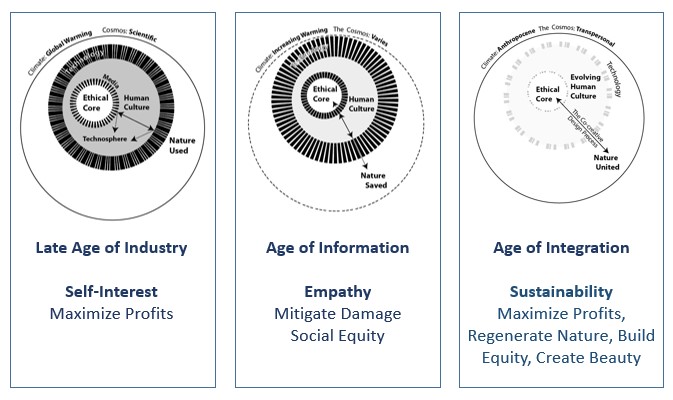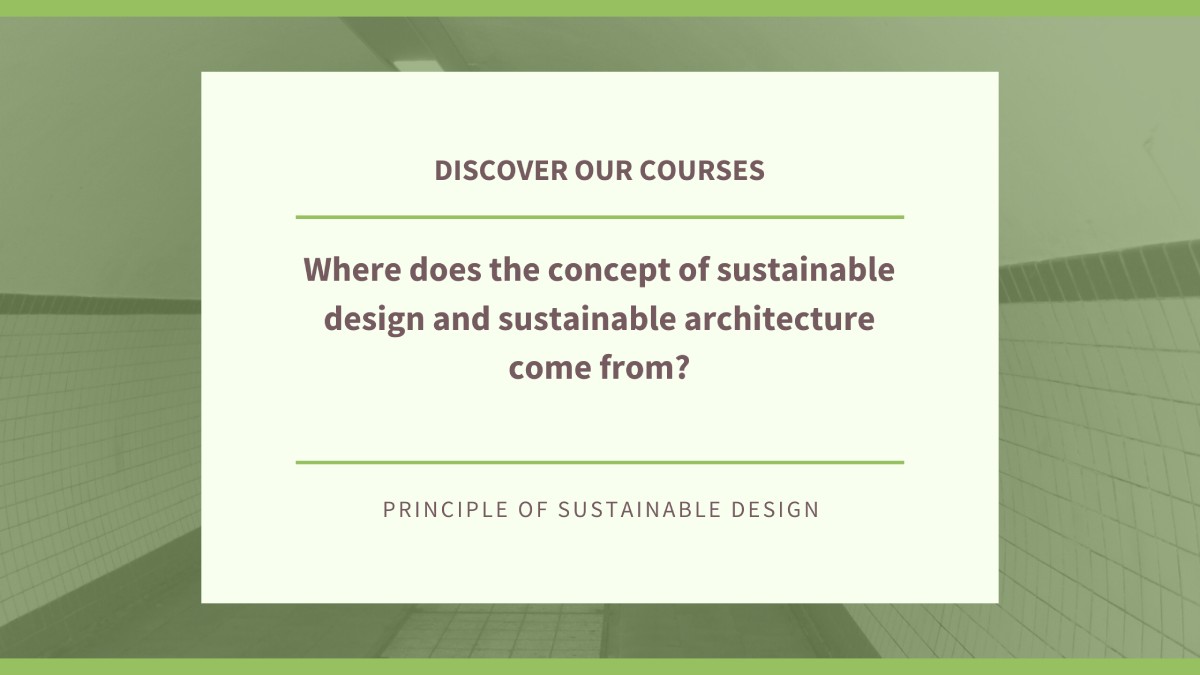Why do we now talk about sustainable design and sustainable architecture?
More and more people say « We want to save the world, we have to save the world ! ». Well in fact the world is doing pretty good. Earth has undergone many changes over the past 4,5 billions years and will continue to do so. Earth will survive humankind. The question is more: in what world do we want to live today and tomorrow.
Since the first humans, as a species, our relationship to nature has changed a lot.
The Sustainable Relationship Between Humans and Nature
We, as humans, have had a lot of world view shifts, or different widely-held belief systems that defined certain time periods, in the relatively short time frame of our existence on the planet. During the ages of Hunter Gatherer and Farming, we were « united » with nature — we were part of nature. During the age of Industry, our separation from nature began as maximizing profits became the main, and pretty much only, goal. Since the first report of the Club de Rome, The Limits to Growth, in 1972and throughout the Information Age, we realized that even if earth has experienced a lot of changes in its history, earth has never changed so fast in such a short period of time. All those changes are man-made and the consequences of humankind actions and will, in turn, have consequences for humankind.

Design for Life, Gibbs-Smith, Layton, UT, p122
The diagram above explains the relationship between ethics, human behavior and the natural world. The center of the diagram expresses our deepest and long held beliefs and values. It can represent the “ethical core” of an individual or even that of an entire society, thus constituting a world view. Here, the eternal question of “why” is asked. The outermost ring expresses the known physical world – a measurable reality, also referred to as the natural world. The center ring is the connection between our world view and the natural world. The “how” symbolizes our behaviors or actions as a species. Design, for example, is “how” we might connect our core values to the natural world through the action of designing something physical. In other words, sustainability, which involves the regeneration of nature, can be positioned as an ethical pursuit.
Today, we still remain separated from nature, and we see it as something to be “saved.” In the future, with sustainable design and sustainable architecture we will again move to a “united” relationship with nature. It’s what we call the Integration age.
Learn more about sustainable design
To go further on this topic, we offer a course dedicated to the principles of sustainable design. This course explores the context, motivations, frameworks and perspectives necessary to build a deeper understanding of sustainability and to form a solid foundation for sustainable design. This article is based on the first lecture of this course. The professor, Rob Fleming is a registered architect with over 18 years’ experience of teaching, research and practice in sustainable design at Jefferson University and University of Pennsylvania.

